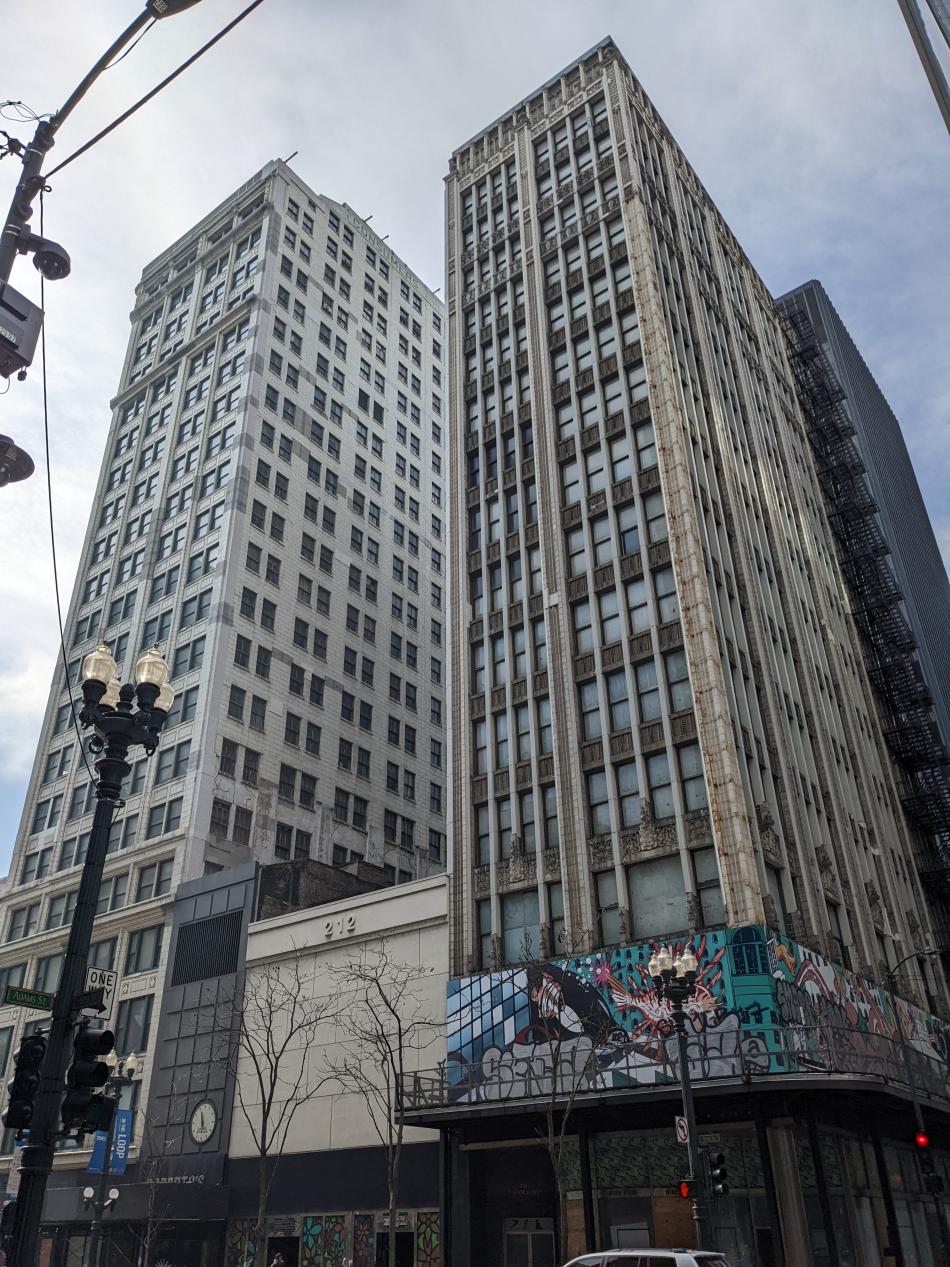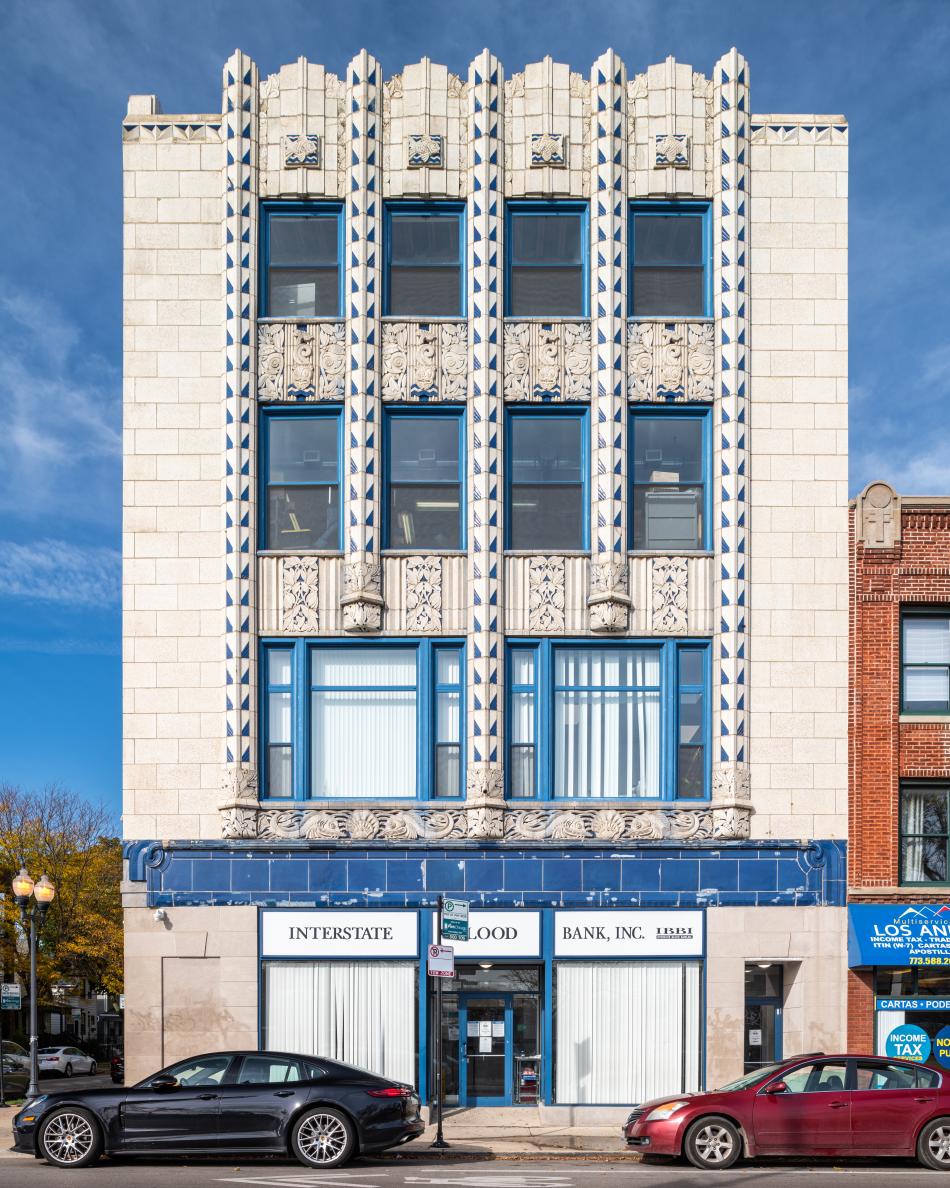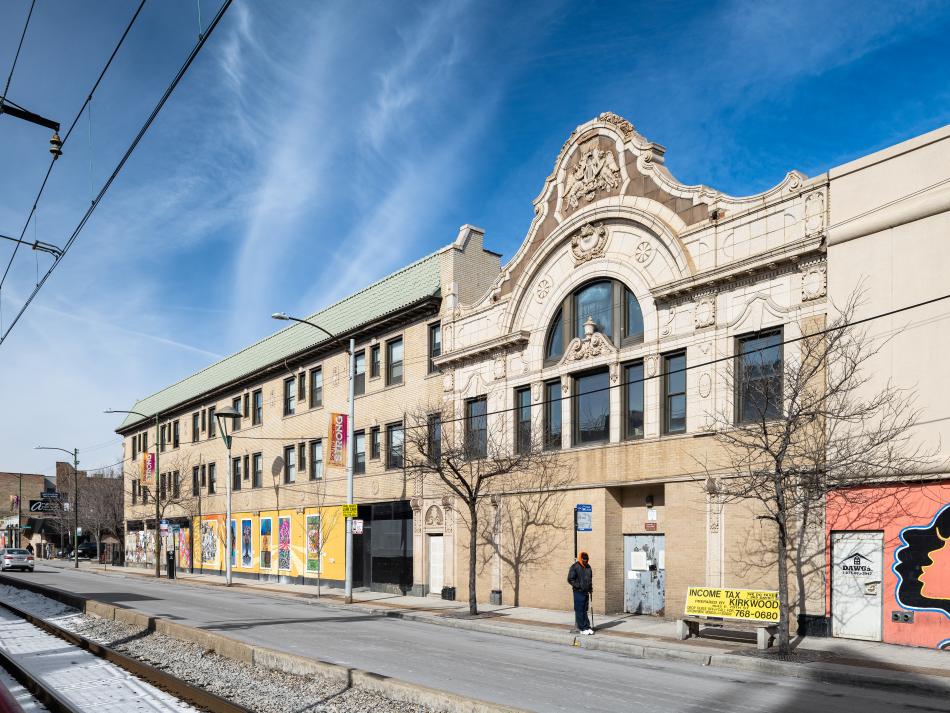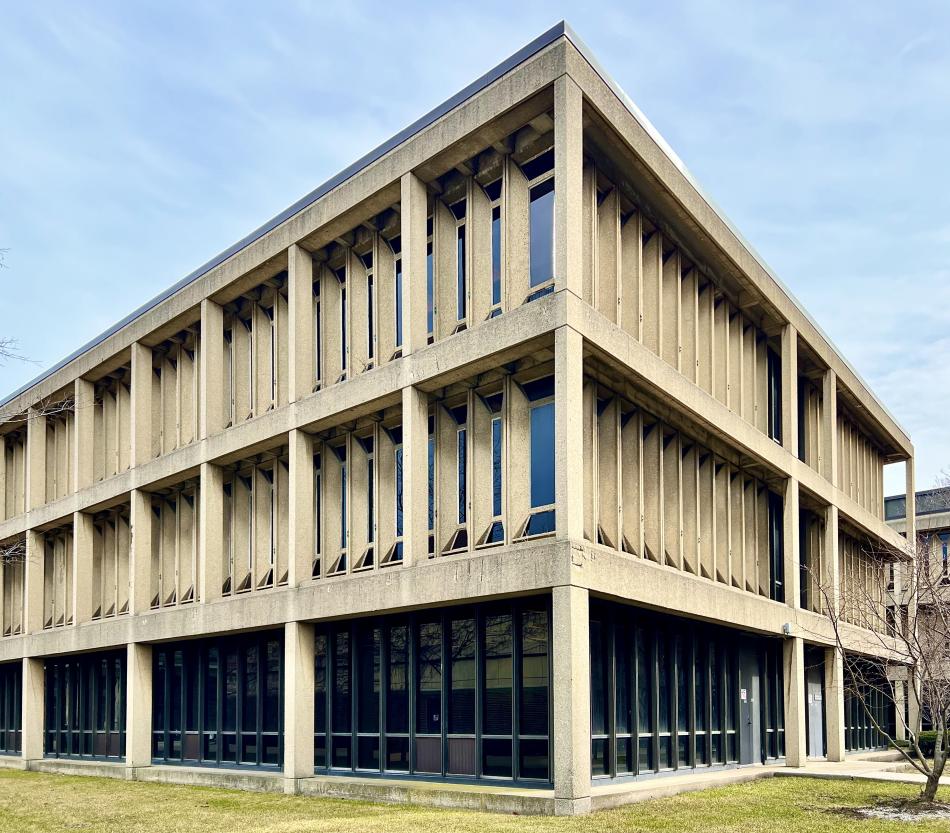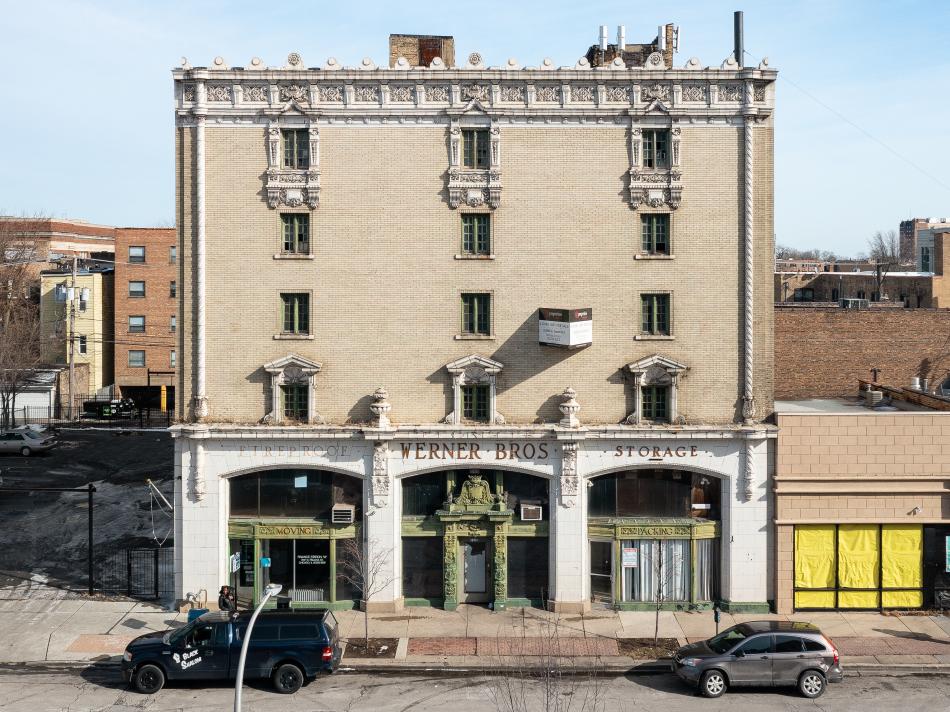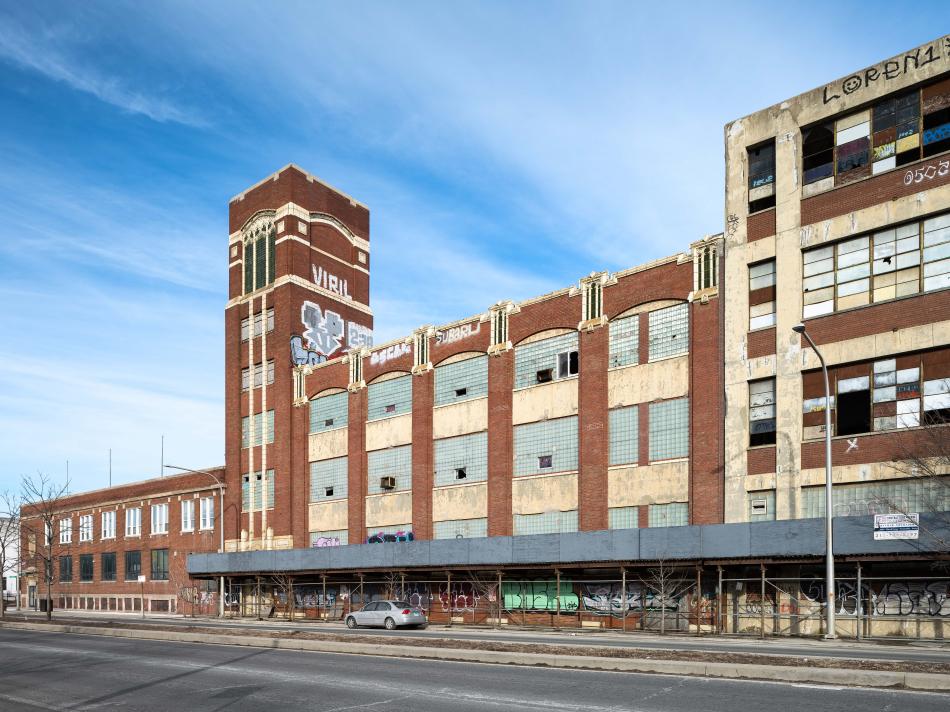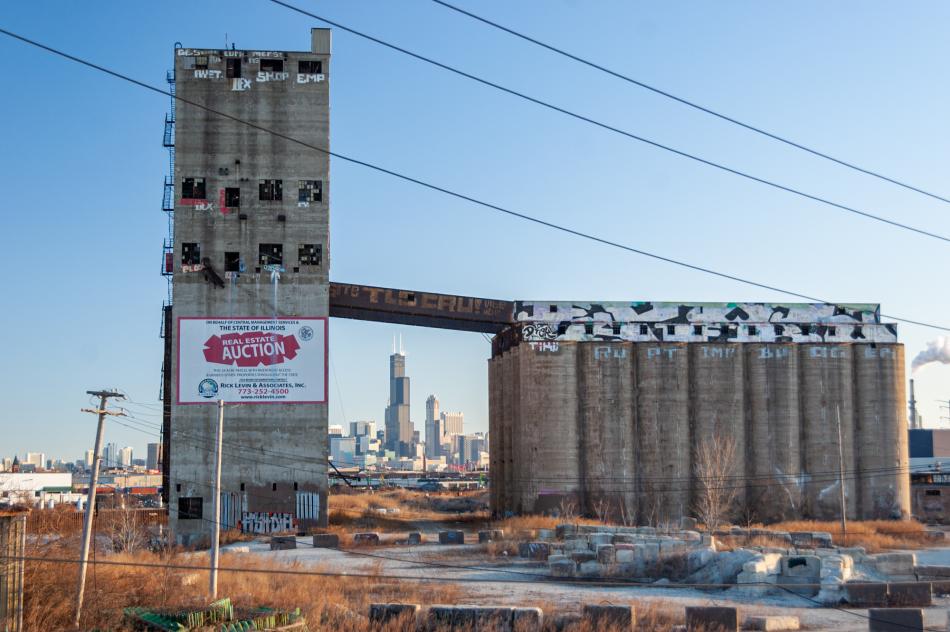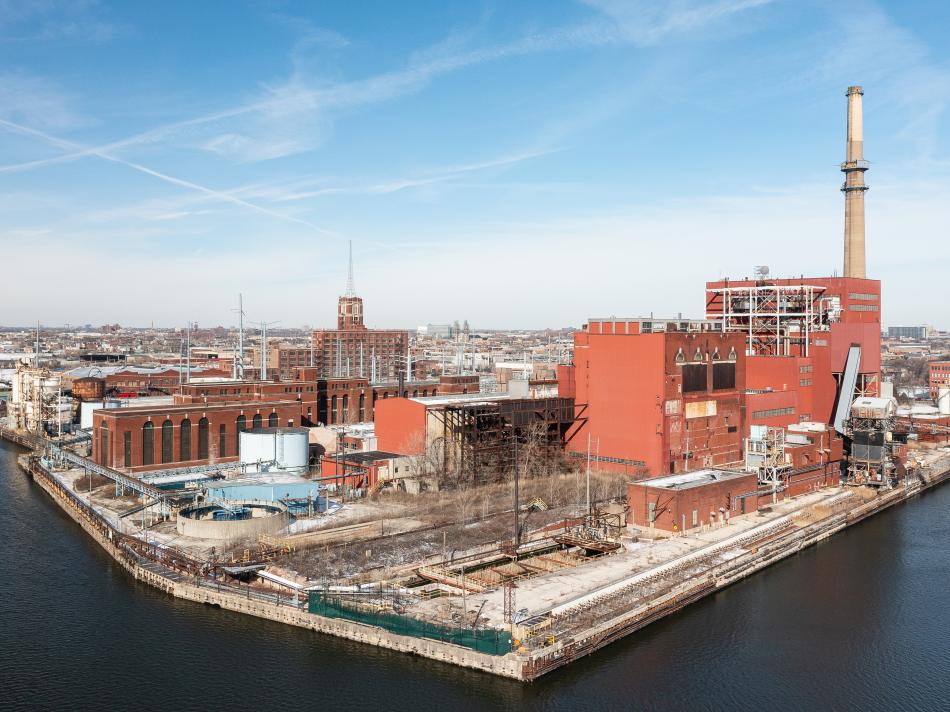Preservation Chicago has released their annual most endangered buildings list, made up this year of downtown highrises, a university building, a theater, and a northside storage building. In its 20th year, the list highlights Chicago structures that are most threatened by potential demolition due to neglect or pending redevelopment.
# 1: The Century and Consumers Buildings
Located at the corner of S. State St and W. Adams St, the Century and Consumers Buildings are directly threatened by the fact that Congress approved a $52 million earmark for their demolition. Located at 202 S. State, the Century Building was built in 1915 and designed by Holabird & Roche. The Consumers Building, located at 220 S. State, was built in 1913 and designed by Jenney, Mundie & Jensen.
With the possibility of demolition looming, a Change.org petition by Preservation Chicago has received over 23k signatures. A 10-minute documentary by ‘The B1M’ regarding the Century and Consumers Buildings has been viewed over 1.2 million times. The Commission on Chicago Landmarks presented a report that proved landmark eligibility but stopped short of a vote to give the government time to consider the plan for demolition and potential alternatives.
Preservation Chicago has come up with a highly unusual solution dubbed ‘The Chicago Collaborative Archives Center’ to preserve the building while meeting the stringent conditions put forth by the GSA in regard to potential adaptive reuse. If demolished, the clearing of the towers could jeopardize the pending nomination of “Chicago’s Early Skyscrapers” from becoming a UNESCO World Heritage site.
--
# 2: Terra Cotta Buildings Throughout Chicago
Located across the city, terracotta buildings range from small commercial buildings to world-renowned buildings. Dating from the 1890s - 1940s, the buildings are often overlooked and have few protections on their own.
Terracotta emerged as an ideal building material after the Great Chicago Fire of 1871, thanks to it being highly versatile, inexpensive, lightweight, and fireproof. Due to their small size and wide distribution through the neighborhoods, these types of buildings are generally unrecognized and unprotected. Disinvestment and development pressures lead to a slow but steady loss of these buildings.
--
#3: Jeffery Theater Building and Spencer Arms Hotel
Located at the corner of E. 71st St and S. Jeffery Blvd in South Shore, the Jeffery Theatre and Spencer Arms Hotel was completed in 1924 and designed by architect William P. Doerr. Despite being an anchor of the vibrant 71st Street commercial corridor, the Jeffery Theatre has been subjected to considerable destruction and only its ornate terra cotta façade and lobby survive along with the residential apartments of the Spencer Arms Hotel.
Today, both the Jeffery Theatre and Spencer Arms Hotel face the threat of demolition due to a proposal from 2017 looking to create a new entertainment complex on the site. Preservation Chicago urges that the historic Jeffery Theatre façade and lobby and Spencer Arms Hotel be incorporated into this new, planned development and that the city should look to create a landmark district for the commercial corridor.
--
#4: The Warehouse
Located at 206 S. Jefferson, a commercial warehouse building, was turned into a nightclub in 1975. The Warehouse became a widely popular destination for Chicago’s African-American LBGTQ+ community and others, as a place of dancefloor liberation. Pioneered by DJ. Knuckles at the club, The Warehouse became known in Chicago as one of the best places to hear this developing sound which became known as “house music.”
When the building was sold in December 2022, the listing noted both the building’s history and the opportunity to clear the site for new development. With no demolition protections, Preservation Chicago is urging the city to landmark the building. The new ownership has been unresponsive to persistent outreach by the organization.
--
#5: Taft Hall at the University of Illinois Chicago
Located near the center of the UIC campus, Taft Hall is part of the campus’s brutalist architecture designed by Walter Netsch of Skidmore, Owings & Merrill. The building is designed with rhythmic bands of pointed concrete grilles between which light passes into the hall’s interior spaces.
In October 2022, the University of Illinois announced plans to renovate the Taft Hall, including a complete demolition of its historic façade. While Taft Hall, along with the adjacent Addams and Burnham Halls, are undeniably in need of restoration, Preservation Chicago urges the University of Illinois Chicago to maintain the original facade.
--
#6: Werner Brothers Storage Building
Located at 7613 N. Paulina, The Werner Brothers Storage Warehouse was designed by George S. Kingsley, fitted with intricate, monochromatic terra cotta and bringing visual beauty to a typically unexceptional building type.
In 2022, plans were announced to demolish the Werner Brothers Storage Warehouse to build an affordable, transit-oriented residential development, of similar size and height to the existing building. Preservation Chicago believes that both affordable housing and historic preservation can be achieved in this proposed development. If historic preservation was pursued, the 20% Federal Historic Tax Credit could provide millions of additional development dollars to the project, which could be used to build additional affordable units.
--
#7: Southwest Side Industrial Buildings
The final designation making the list is actually a set of three industrial buildings on the South Side.
Continental Can Building - 3815 S. Ashland
In 2022, plans were announced to demolish one of the most prominent buildings in the Central Manufacturing District’s-Original East District (CMD East) for the construction of a new cold storage facility. The historic structure, notable for its Gothic terra cotta detailing and eye-catching tower, was designed by the district’s then-in-house architect, Samuel Scott Joy, and completed in 1920.
The demolition of this lovely Gothic terra cotta building, and tower would be a terrible loss for the CMD-Original East District and, more broadly, the Southwest Side’s industrial heritage. Preservation Chicago encourages the developer to pursue an adaptive reuse of the Continental Can Building, especially the Ashland Avenue tower and facade.
Damen Silos - 2860 S. Damen
Situated along the South Branch of the Chicago River, the Damen Silos have been an iconic part of Chicago industrial and agricultural history for over a century. The silos were closed in 1977 and enjoyed a second life in recent years as a film site and destination for unofficial urban tourism.
A recent decision by the State of Illinois to sell the Damen Silos and 23.4-acre riverfront site to a buyer with plans for demolition makes them highly threatened. The buyer’s asphalt plant in the heart of the Pershing Road Central Manufacturing District, has become an acute environmental challenge confronting the McKinley Park community. To avoid the loss of one of the last monumental landmarks to its agricultural industrial past, the organization recommends the consideration of the historic Damen Grain Silos as part of a larger public amenity and reuse vision.
Fisk Power Station - 1111 W. Cermak
Dating back to 1903, the large electrical-generating station was designed by architects Shepley, Rutan and Coolidge. Employing technology to create the world’s largest coal-fired electrical generators, Fisk became the model that was copied and replicated around the world.
Fisk Power Station remains the last large-scale survivor of Chicago’s power generation history reflecting the growth of the city into an industrial powerhouse. A repurposed and reenvisioned Fisk Power Station could become a huge asset as a cultural and community center to the Pilsen, Chinatown, Near-Southwest side and Central Area residents.





